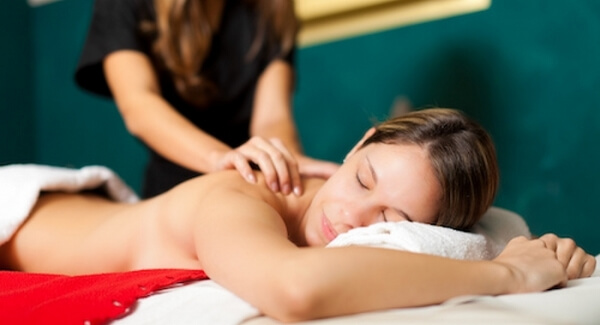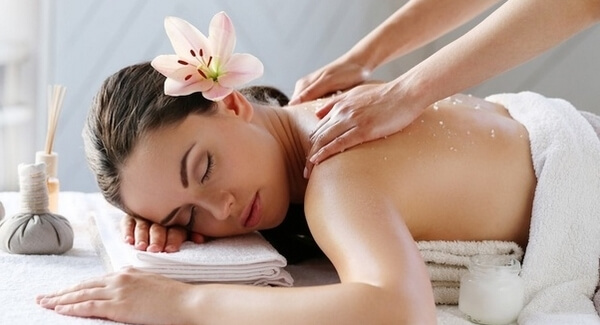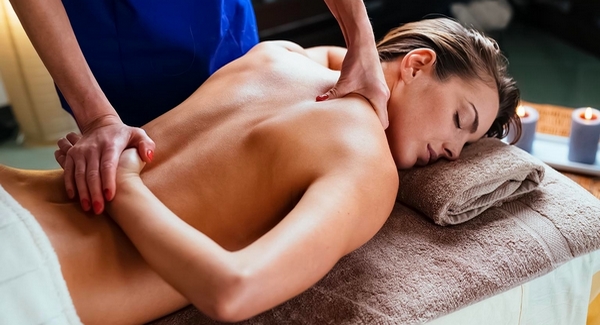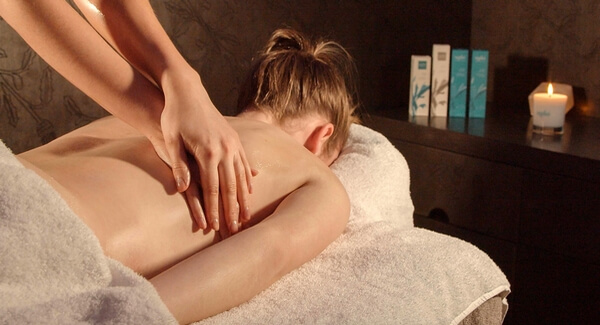Post-Thai Massage Care: Tips for Maximizing the Benefits After Your Session

Your Thai massage session doesn't truly end when you leave the treatment room. The hours and days following your massage represent a critical period during which your body integrates the work, processes the released tension, and continues to heal. How you care for yourself during this time significantly influences the depth and duration of benefits you receive.
Many people underestimate the importance of post-massage care, rushing immediately back into demanding activities, neglecting hydration, or failing to honour their body's need for rest and recovery. These oversights can diminish therapeutic benefits and, in some cases, create unnecessary discomfort or soreness that proper aftercare would prevent.
This comprehensive guide explores essential post-Thai massage care practices, explaining why each matters, how to implement them effectively, and how to extend and maintain the benefits of your session for days, weeks, and even months afterwards.
Understanding the Post-Massage Period
Before exploring specific care practices, it's valuable to understand what happens in your body after a Thai massage and why this period matters so much.
Immediate Post-Session Effects
Thai massage creates numerous physiological changes, including circulatory stimulation, tissue release, nervous system shifts, energetic changes, and mild inflammatory response as part of healing.
The Integration Period
Your body needs time to process and integrate these changes. During the 24-72 hours following your session, tissues continue to adjust, the nervous system processes new information, metabolic wastes are eliminated, inflammation resolves, and energy patterns settle into a new balance.
Essential Aftercare Practices
Hydration: The Foundation of Recovery
Why it matters: Hydration represents perhaps the single most important post-massage practice. Thai massage stimulates circulation, potentially mobilising metabolic wastes and toxins. Without adequate hydration, your body struggles to eliminate these compounds, which can potentially cause headaches, fatigue, or increased soreness.
How to hydrate effectively:
- Immediately after: Drink 250-500ml of room temperature water within 15-30 minutes
- Throughout the day: Continue drinking regularly, aiming for 2-3 litres total
- Following days: Maintain good hydration for 2-3 days post-session
- What to drink: Plain water, herbal teas, coconut water
- What to avoid: Excessive caffeine, alcohol, very cold water immediately after
Rest and Recovery: Honouring Your Body's Needs
Why it matters: Your body needs time and energy to integrate changes. Rushing into demanding activities reactivates stress responses, diverts energy from healing, and may stress newly mobilised tissues.
How to rest effectively:
- Immediate post-session: Allow 15-30 minutes of quiet time
- Day of treatment: Avoid intense exercise or demanding physical activities
- Evening: Prioritise early bedtime if tired
- Following day: Return to normal activities whilst continuing to avoid extreme exertion
Nutrition: Supporting Recovery
What to eat:
- Lean proteins: Fish, chicken, beans, lentils, eggs
- Fresh vegetables: Leafy greens, cruciferous vegetables, colourful varieties
- Fresh fruits: Berries, citrus, melon, apples
- Healthy fats: Avocado, nuts, seeds, olive oil, fatty fish
- Whole grains: Brown rice, quinoa, oats
What to avoid:
- Heavy, greasy foods that tax digestion
- Highly processed foods lacking nutrients
- Excessive sugar creating inflammation
- Very large meals
Avoiding Substances That Interfere with Recovery
Alcohol: Significantly dehydrating, stresses the liver, interferes with sleep quality, creates inflammation. Avoid for 12-24 hours post-massage.
Caffeine: Diuretic effect, stimulates the sympathetic nervous system, may interfere with sleep. Limit to one or two cups in moderation.
Warm Baths and Heat Therapy
Epsom salt baths: 2-4 hours after massage, draw a warm (not hot) bath with 1-2 cups of Epsom salts. Soak for 15-20 minutes.
Temperature considerations: Use comfortably warm water (37-39°C/98-102°F). Avoid very hot water, saunas, or hot tubs for 24 hours after a deep massage.
Gentle Movement and Stretching
Beneficial activities:
- Easy walking: 15-30 minutes maintains circulation
- Light stretching: Gentle, non-forceful stretching maintains flexibility gains
- Yoga: Gentle, restorative yoga supports integration
- Tai chi or qigong: Gentle, flowing movements
What to avoid: Intense exercise, competitive activities, new challenging activities, excessive sitting. Wait 24-48 hours before intense training.
Sleep: The Ultimate Recovery Tool
Quality sleep represents your body's primary healing time. Prioritise 7-9 hours, potentially more, the night of your massage. Create optimal conditions: a cool, dark, quiet room with comfortable bedding.
Managing Post-Massage Sensations
Normal Post-Massage Effects
What you might experience:
- Deep relaxation or increased energy
- Emotional responses (feeling lighter, occasional tears or laughter)
- Thirst
- Mild muscle tenderness (12-24 hours later)
- Improved flexibility and reduced pain
When Soreness Occurs
Some people experience mild muscle soreness similar to post-exercise effects. This typically appears 12-24 hours after the session and resolves within 24-48 hours.
How to manage:
- Increase hydration
- Gentle movement (easy walking, light stretching)
- Warmth (warm baths, compresses, gentle heating pads)
- Rest and recovery time
- Anti-inflammatory foods (ginger, turmeric, omega-3s)
When to be concerned: Contact your therapist if experiencing severe pain, pain worsening after 48 hours, sharp acute pain, numbness, tingling, weakness, or any concerning symptoms.
Maintaining and Extending Benefits
Regular Sessions
Recommended frequency:
- Initial improvement: Weekly or bi-weekly for 4-6 weeks
- Maintenance: Every 2-4 weeks
- Specific issues: More frequent initially, reducing as improvements solidify
- General wellness: Monthly sessions
Self-Care Between Sessions
- Stretching practices: Learn key stretches from your therapist
- Foam rolling: Self-myofascial release between sessions
- Yoga or movement practices: Regular practice maintains gains
- Body awareness: Notice tension patterns early
Lifestyle Factors
- Ergonomics: Address workstation setup and sleeping positions
- Stress management: Meditation, breathing practices, time in nature
- Regular exercise: Appropriate movement supports overall health
- Quality sleep: Consistent good sleep prevents tension accumulation
- Healthy nutrition: Whole foods and anti-inflammatory diet
Finding Quality Care
Maintaining benefits requires skilled practitioners who understand your needs. For those seeking experienced therapists who provide excellent aftercare guidance, you can book professional Thai massage services in the UK who support both your sessions and ongoing wellness journey.
Conclusion: Partnering in Your Healing
Post-Thai massage care isn't a burdensome list of rules but rather an opportunity to partner actively in your healing process. Each practice, from hydration to rest to gentle movement, represents a way of honouring the work your body is doing to integrate therapeutic changes and restore balance.
The care you provide yourself after your massage session determines whether benefits last days or weeks, whether improvements deepen or dissipate, and whether each session builds on previous work or provides temporary relief before tension returns.
By understanding why aftercare matters, implementing key practices consistently, and maintaining awareness of your body's responses and needs, you transform Thai massage from an occasional pleasant experience into a profound healing practice that supports your wellbeing long-term.
Remember that you and your therapist are partners in this process. Your therapist provides skilled treatment during sessions; you support and extend that work through thoughtful aftercare. Together, this partnership creates lasting improvements in flexibility, pain levels, stress management, and overall quality of life.
The ancient wisdom of Thai massage continues working long after you leave the treatment room. By caring for yourself appropriately during the integration period and maintaining beneficial practices on an ongoing basis, you allow this wisdom to unfold fully, supporting your journey toward optimal health and vitality.
Search Massage Therapists Near You.
More From Our Blog
Latest Blogs
Tips: How to Create the Perfect At-Home Mobile Massage Experience
Massage Therapy as a Career: Pathways to a Fulfilling Profession Globally
Building a Brand of Trust: Digital Age Strategies for Massage Therapists
The Future of Touch: How Technology is (and Isn’t) Changing Massage Therapy
A Global Look at Massage Therapy Qualifications - USA, Canada, Australia & Beyond
Beyond the Salon: Unique Massage Therapies You Never Knew Existed
The Power of Two: Exploring the Benefits and Etiquette of Couples Massage
Massage for Every Body: Celebrating Inclusivity in the Wellness Space
Why Men Are Embracing Professional Massage More Than Ever Before
The Healing Hands: Inspiring Stories of Massage Therapists Changing Lives
View All Blogs
Advertise with Massages Me and Grow Your Business!
Create an Ad within minutes & increase your earning potential as we connect you with more clients!



